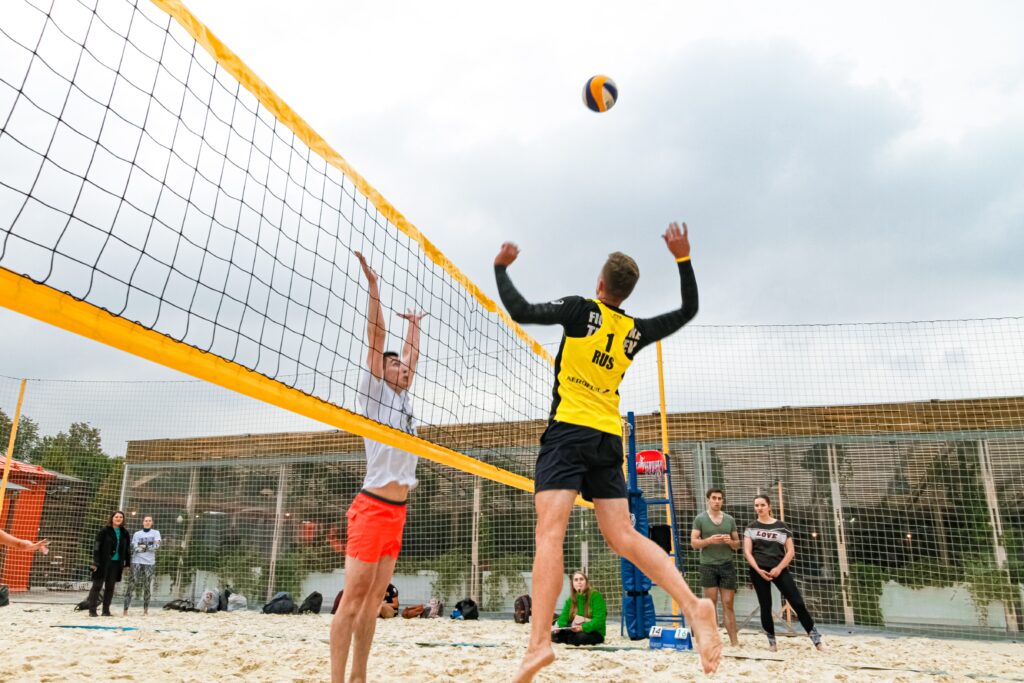Volleyball is a sport that can be played on a variety of surfaces, including indoor hard courts and outdoor sand courts. While the basic rules and objectives of the game remain the same, the differences in the playing surfaces can greatly impact the approach and technique used by players.
An indoor volleyball approach is characterized by a quick and explosive jump, often referred to as a “two-foot jump.” This approach is used to clear the net and generate power in the hit. Indoor players also use a shuffle step in order to generate momentum and maintain balance while jumping. This approach is primarily used on hard surfaces such as indoor courts and grass courts.
On the other hand, a sand volleyball approach is characterized by a more gradual and controlled jump, often referred to as a “one-foot jump.” This approach is used to maintain balance and control while jumping on the softer and less stable surface of a sand court. Sand players also use a slide step in order to generate momentum and maintain balance while jumping.
In terms of technique, indoor players often use a higher arm swing and hit the ball with more force, while sand players use a flatter and more controlled swing. This is because the ball moves slower on sand and the sand surface does not allow for the same level of power as a hard surface does.
Physical therapy can help players adjust to the different approaches and techniques required for indoor and sand volleyball. A physical therapist can work with a player to improve their balance, stability, and jumping mechanics, as well as address any muscle imbalances or pain that may be affecting their performance.
In summary, the approach and technique used in indoor and sand volleyball can vary greatly due to the differences in the playing surfaces. Indoor players tend to use a quick and explosive jump with a shuffle step and a high arm swing, while sand players tend to use a more gradual and controlled jump with a slide step and a flatter arm swing. Physical therapy can help players adjust to the different approaches and techniques required for each type of surface.


